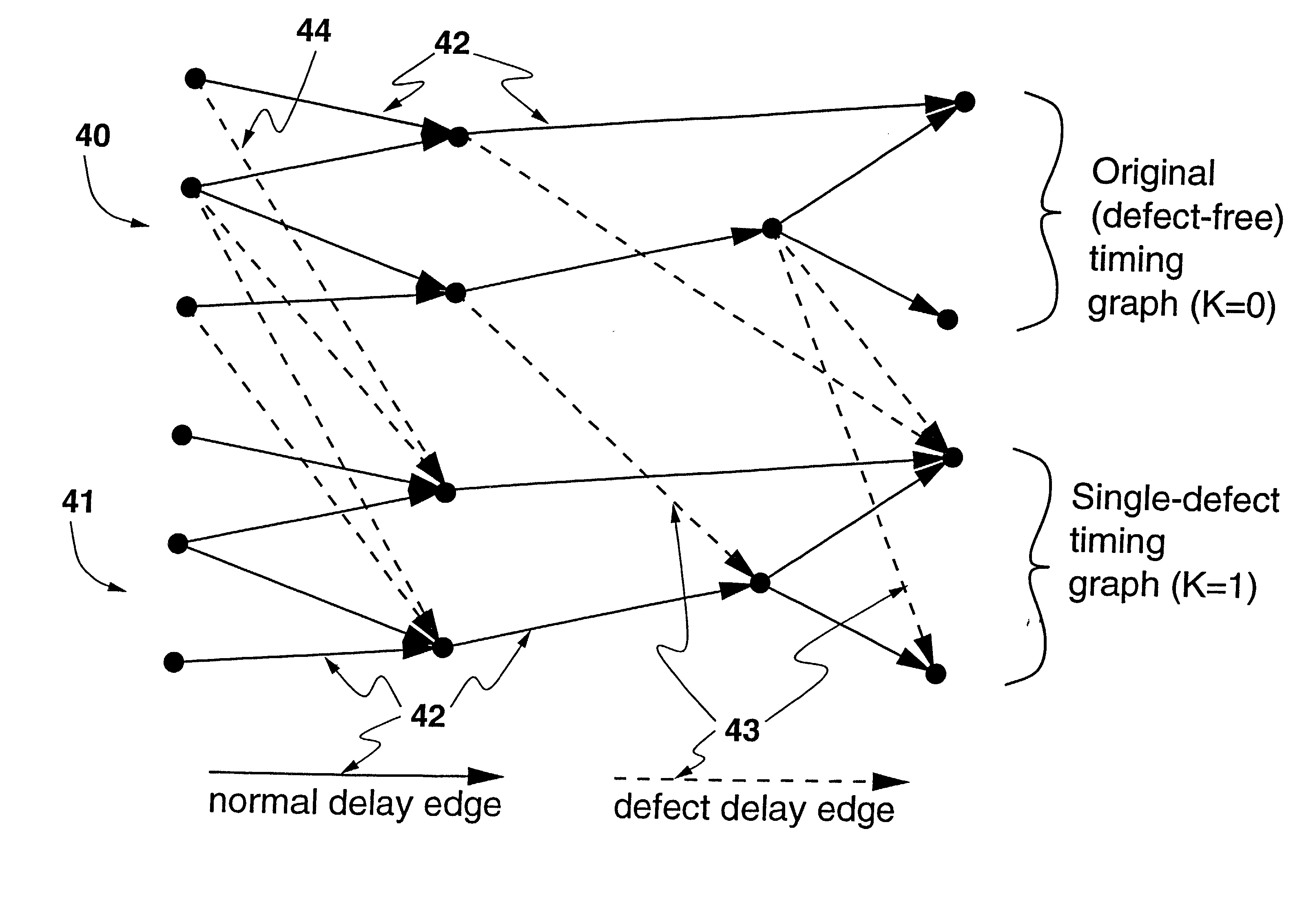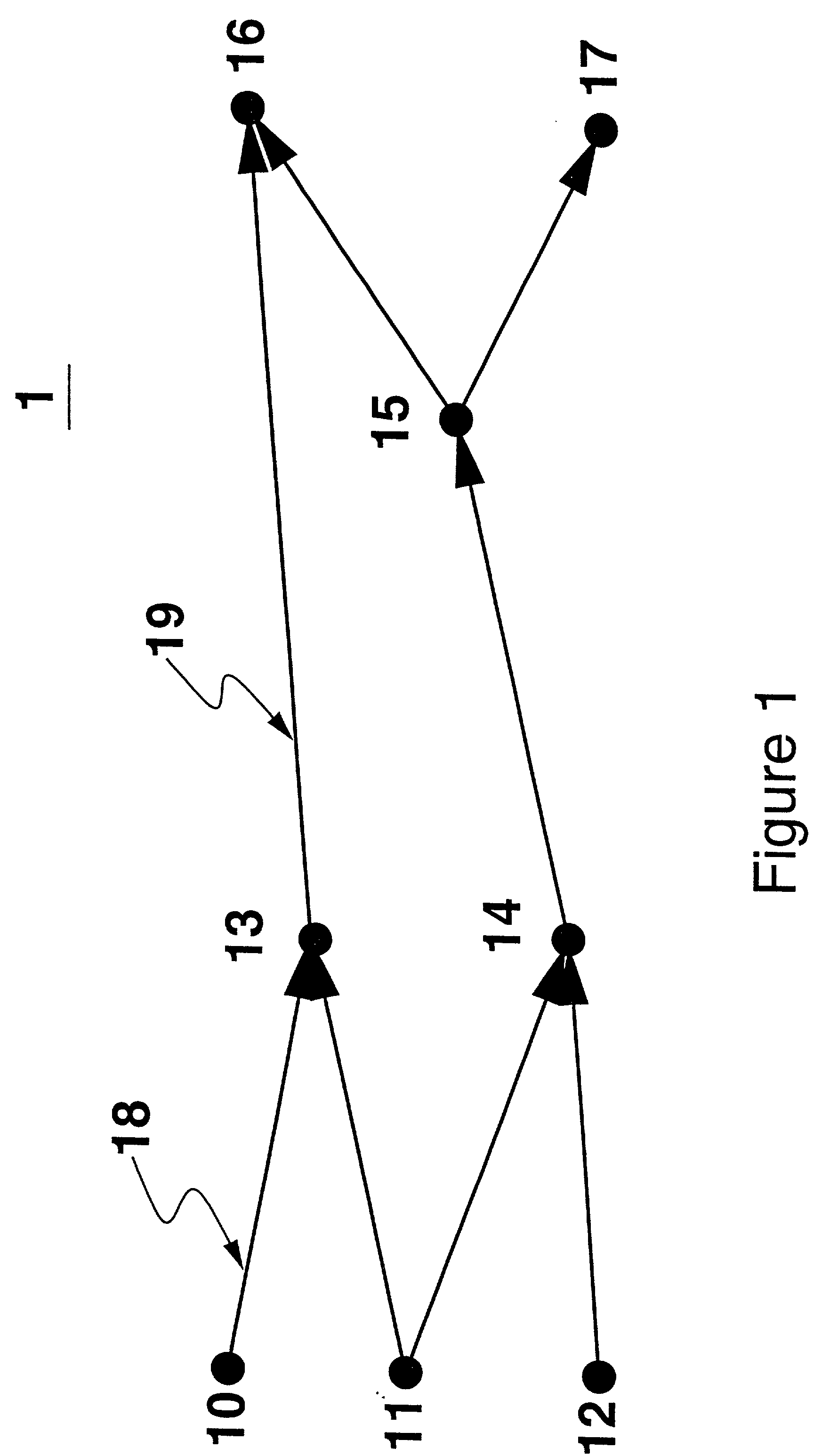Method and system for fault-tolerant static timing analysis
a static timing analysis and fault-tolerant technology, applied in the field of logic network timing analysis, can solve problems such as defects, manufacturing imperfections, and unreality, and achieve the effects of avoiding defects, avoiding manufacturing defects, and avoiding manufacturing defects
- Summary
- Abstract
- Description
- Claims
- Application Information
AI Technical Summary
Problems solved by technology
Method used
Image
Examples
Embodiment Construction
[0043] To further explain the problems of the conventional technology, a timing graph 1 is shown in FIG. 1 for an arbitrary network composed of nodes 10-17. The network might be a simple single element such as a NAND gate or could be composed of millions of elements as commonly found on current chip designs. The techniques disclosed herein apply regardless of number of nodes in the network. An actual application would typically involve millions of nodes and would be implemented by a computer program.
[0044] Nodes 10-12 in FIG. 1 are input nodes, and nodes 16 and 17 are output nodes. Internal nodes 13-15 might represent internal points within an element, or might represent points of a circuit where elements interconnect. Edges 18,19 are associated with ordered node pairs, exemplified in FIG. 1 by edge 18 for nodes 10 (source node) and 13 (sink node) and edge 19 for nodes 13 and 16. A path is a series of edges followed in the direction indicated by the arrows between points of interest...
PUM
 Login to View More
Login to View More Abstract
Description
Claims
Application Information
 Login to View More
Login to View More - R&D
- Intellectual Property
- Life Sciences
- Materials
- Tech Scout
- Unparalleled Data Quality
- Higher Quality Content
- 60% Fewer Hallucinations
Browse by: Latest US Patents, China's latest patents, Technical Efficacy Thesaurus, Application Domain, Technology Topic, Popular Technical Reports.
© 2025 PatSnap. All rights reserved.Legal|Privacy policy|Modern Slavery Act Transparency Statement|Sitemap|About US| Contact US: help@patsnap.com



